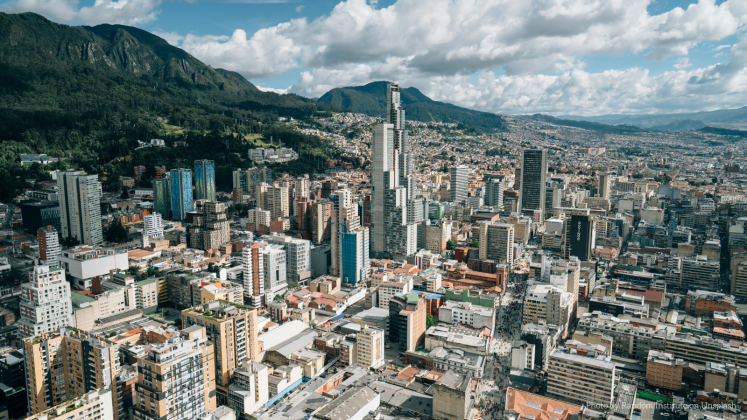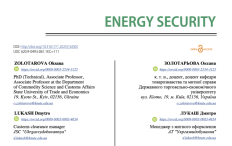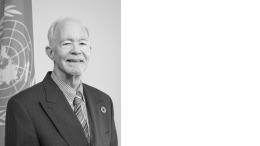"In different households, there is a hidden poverty so miserable and inhumane (...) that government entities, even if they are somewhat aware, cannot imagine the consequences.”
Community leader from the neighborhood of Barrios Unidos, May 29, 2013 (Bogotá, Colombia)
In the hustle and bustle of daily life, it can be overwhelming to keep up with the vast amount of news and information coming from different sources. The constant changes in social sciences and the wider world bring new challenges: emerging forms of poverty, growing anxieties, and complex realities that are not always easy to track.
One of these realities is hidden poverty, which will be examined in this blog post. It might seem like a new trend, but unlike fleeting headlines, hidden poverty has existed for a long time, often just out of view. It raises a basic question: what do we actually mean when we talk about hidden poverty? The term can mean many things at once, or nothing at all if not clearly defined. As this phenomenon not only reveals new forms of vulnerability, it also challenges the foundations of traditional social protection systems, which often rely on visible, income-based indicators to determine who deserves support.
Colombia and the Pandemic: When the Invisible Became Real
This idea became especially evident during the COVID-19 pandemic. It became clear how many people, who had never been seen as vulnerable, let alone poor, had to ask for help, sometimes publicly and ashamed. Colombia offers a telling example. Despite having relatively advanced data systems and well-targeted assistance programmes, extra and emergency aid during the pandemic focused primarily on those considered most in need who, in a way, were seen as more “deserving.” But the pandemic didn’t just reveal deep inequality or introduce new forms of vulnerability. It also made visible how many people from traditionally secure socioeconomic groups—especially the middle and upper-middle classes—were suddenly facing hardship, in some cases lacking even basic necessities, like food. These needs fall outside the reach of existing aid channels and social protection networks.
In the Colombian context, this phenomenon has been revealed through testimonies from people who, for example, live in one of the most exclusive neighborhoods in the locality of Usaquén, in northern Bogotá, but sometimes have to choose between feeding themselves or their pet. Other examples include residents of high-end apartment buildings who go into debt just to pay for their utility bills. From the outside, they might appear well-off, but they are actually living in precarious conditions.
What makes this even more complex is that these are individuals who barely have enough to eat or who must borrow money to cover basic services, yet their situation is hard to detect because they live in some of the country’s best-known properties. On top of that, many are reluctant to acknowledge their needs. As the BBC reported (2025): “Having experienced a good financial situation in the past, they are ashamed to admit they now need a subsidy just to survive.”
From a more technical perspective, what little has been written about hidden poverty describes it as a silent urban process, different from traditional poverty where deprivation is visible (Arabindoo, 2011; Bhan, 2009). Mendoza-Torres et al. (2011) refer to it as a condition that affects middle and upper classes, describing it as an inward form of impoverishment (Minujin, 2010). This process often comes with a loss of agency and symbolic identity (Centeno et al., 2024; Morton, 2024), shaped not only by financial decline but also by the identity crisis brought on by a sudden shift in class status.
Geographically, hidden poverty does not take place in the usual areas flagged as poor. As Torres-Penagos (2018) notes, it often affects people who still have access to higher education, basic services, housing, and recreational activities—but who have lost real purchasing power. This disconnect produces a kind of “shameful poverty,” where economic hardship is real but largely invisible to the systems designed to detect and respond to poverty.
In that sense, recognizing hidden poverty is essential, not only because of what it reveals about social inequality, but also because of what happens when it's ignored. When this form of poverty isn’t acknowledged or properly measured, it rarely becomes a priority in public policy. As a result, many people are left out of support systems simply because they don’t fit into traditional poverty categories. Most social protection tools are built to respond to visible need—those whose deprivation is clear and measurable. But this leaves out those whose vulnerability is just as real, though harder to define.
If we want to improve responses to poverty, we first need to see the full picture. That means asking new questions, building better definitions, and being open to the idea that poverty doesn’t always look the way we expect . What we don’t see—and don’t understand—won’t be addressed. Making hidden poverty visible is the first step toward building policies that are truly inclusive.
The Trouble with How We Measure Poverty
After looking at the concept of hidden poverty and its many layers, it’s necessary to take a closer look at how poverty is typically measured—especially through proxy means tests (PMTs). These tools have been widely used to assess levels of deprivation and determine who qualifies for support. But they also come with real limitations. One key issue is the selection of indicators (Zuhr, 2009; Lok-Dessallien, 1999). These indicators can be somewhat subjective and often miss important dimensions of poverty, especially those that are less visible. Another concern is stigmatisation (Grosh and Baker, 1995): by selecting visible traits linked to poverty, the process can end up labeling and marginalising people. Then there’s the question of accuracy (Castañeda and Fernandez, 2005). Because these tests rely on indirect data, they can produce errors and lead to the exclusion of people who genuinely need help. Finally, poverty is not static. Proxy means tests tend to provide a snapshot in time, failing to reflect how quickly a person’s circumstances can change.
Despite their shortcomings, proxy means tests still play an important role in identifying and addressing poverty. But if we want to respond more effectively to hidden poverty, we need to recognise the limits of these tools and start thinking about how they might be complemented by other methods—ones that better reflect the complex and shifting realities people face.
Looking beyond the technical limitations, we also have to question how poverty is framed in public discourse. Scholars like Harriss (2009) point out how poverty is often depoliticised, treated as a set of data points rather than a product of broader social and economic structures. Since the early 2000s, authors like O’Connor and David Mosse have advanced the idea of relational poverty, which pushes us to think differently: not just about who is poor, but about how poverty is produced in relation to power and privilege (Wood, 2003).
From this perspective, social categories such as “poor” or “middle class” are not fixed or separate. Instead, they are co-constructed—shaped through relationships, interactions, and social norms (Elwood et al., 2017). Hidden poverty, then, is not just a matter of material lack. It is also relational, defined both by how people see themselves and by how they are positioned by others.
Why Targeting Isn’t Enough
This challenge calls for a shift from targeted, eligibility-driven systems to universal and inclusive social protection frameworks. While targeting can be efficient in resource-constrained settings, it often reinforces exclusion when based on rigid thresholds or flawed assumptions about who is “most in need.” Hidden poverty exposes the limits of this model: when people in precarious situations are not “poor enough” to qualify, but still face significant risks and unmet needs, the system fails in its protective role.
But not only that—being very pragmatic and simple—what hidden poverty actually exposes is the emergence of new forms of poverty, new vulnerabilities, and dynamics that go beyond the idea that everything can be solved through rigid parameters.
So, even though universal social protection doesn't mean providing the same benefits to everyone without distinction, it does mean designing systems that are broad-based, rights-oriented, and capable of adapting to different forms of vulnerability, including those that are temporary, invisible, or newly emerging (Razavi et al., 2022). This requires moving beyond narrow means-testing and toward models that blend universal floors with responsive, participatory tools for identifying unmet needs.
So much so that if we really want to promote universal social protection, it implies having a system where all people have access to policies and programmes that protect them from poverty, risks to their livelihoods, and well-being throughout their lives (Shriwise et al.,2020). Therefore, it must go not only beyond a specific target, but also beyond basic social assistance and include a range of interventions to address various needs and vulnerabilities.
In doing so, inclusive protection means listening to the lived experiences of people—particularly those whose exclusion is not captured in data. Participatory methods, community feedback loops, and localized knowledge must be integrated into how we assess and respond to risk. This is especially critical in urban areas where appearances can be deceiving, and economic insecurity is hidden behind formal housing, employment, or education. Additionally, we need to expand our frameworks to understand this struggle as part of the broader fight against inequality—because inequality ultimately erodes all dimensions and profoundly affects the lives of the people we are talking about in this blog post.
More fundamentally, if social protection is a public good, then access to it should not hinge on visibility or conformity to outdated definitions of poverty. Inclusive systems recognize that vulnerability is fluid and that everyone, at some point, may need support. In this sense, universal protection is not just about expanding coverage—it’s about rethinking the very ethics and logic behind who counts as “deserving” and why.
Seeing What Has Long Gone Unseen
Tackling hidden poverty means rethinking how we define, measure, and respond to poverty in public policy. Current tools need to be expanded to capture forms of economic insecurity that often go unnoticed—like financial instability, downward mobility, and fragile livelihoods. These conditions don’t always meet the thresholds of extreme deprivation, but they still leave people vulnerable and excluded from support. And, in the end, recognising hidden poverty isn’t just an academic exercise—it’s a necessary step toward building more inclusive and responsive social protection systems. As long as poverty is defined too narrowly, and measurement tools are built around outdated assumptions, large segments of the population will remain invisible to those systems.
Expanding our understanding of who is vulnerable, and why, is key to making social protection is truly universal, not just in coverage but in relevance. If social policy is meant to protect, it must start by seeing what has long gone unseen.
In Colombia, the COVID-19 pandemic made this painfully clear. Despite having robust data systems and targeted assistance programmes, many people who suddenly found themselves unable to meet basic needs were left out of support mechanisms, not because they didn’t need help, but because they didn’t fit traditional definitions of poverty. Hidden poverty was not only revealed; it was lived through skipped meals, unpaid bills, and the quiet shame of asking for help. If we are to build truly inclusive systems, these experiences must inform how we define, measure, and respond to vulnerability going forward. Hence, hidden poverty challenges core assumptions of traditional targeting: that poverty is static, that it’s easily visible, and that eligibility can be cleanly drawn. It reveals how deeply social protection systems are shaped by what they are able—or willing—to see.
Acknowledgments
This reflection stems from the author’s ongoing PhD research (as of 2025), Programme on Innovation, Economics, Governance and Sustainable Development at UNU-MERIT Maastricht. The research is supervised by Prof. Dr. Franziska Gassman, Dr. Zina Nimeh, and Dr. Andrea Correa Franco.
This article is republished from Socialprotection.org under a Creative Commons license. Read the original article.
Suggested citation: Ramirez Maria ., "Share The Invisibility of Hidden Poverty: Reflections from a Social Protection Perspective," UNU-MERIT (blog), 2025-07-22, 2025, https://unu.edu/merit/blog-post/share-invisibility-hidden-poverty-reflections-social-protection-perspective.



